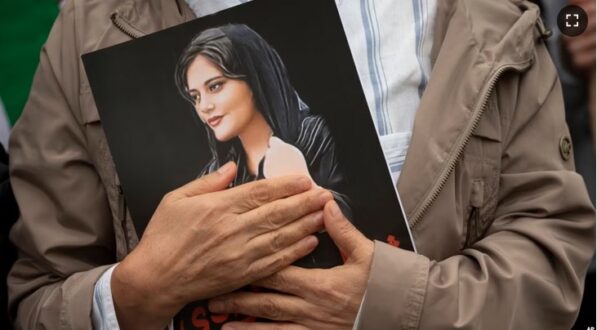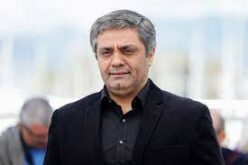Al-Monitor – Israelis of Iranian origin and Israeli politicians have increased their activities to support the Tehran protest movement, including contacts with the son of the late Shah Mohammad Reza Pahlavi and Iranian activists in exile. They are hoping that their support will assist the protest movement that erupted a year ago in weakening the Ayatollah-run government.
With Israel mired at the time in an especially heated election campaign last September, Israeli politicians were slow to react to the breakout of the Mahsa Amini protests. Still, since then, an increasing number of politicians are expressing their support for the Iranian women and people. The first-ever visit of exiled Pahlavi in Israel also contributed significantly to raising awareness in Israel and engaging the political echelon in the “Woman, Life, Freedom” global campaign.
Joining other cities around the globe, the central Israeli city of Holon hosted on Sunday afternoon a large rally in support of the Iranian women fighting for their independence and freedom. Most of the attendees were Israelis of Iranian origin and representatives of Israel-Iran associations. Participants waved flags of both countries and held up pictures of people killed during the government’s crackdown on the protesters.
“As a woman and as an Israeli, I could not stand silent when women rights are being trampled on simply because they are women,” politician Anat Kinori, who addressed the Holon rally, told Al-Monitor. “The people of Israel support the righteous struggle of the Iranian people for freedom and liberty, and the women in Israel support the struggle of the women in Iran against a brutal oppressive regime.”
Also marking one year since the protests began, Minister of Intelligence Gila Gamliel traveled to London on Sept. 6-7, where she met with Iranian exiled activists and journalists. Gamliel was the minister hosting the last Shah’s son, Reza Pahlavi, in Israel during his April visit. In comments to Al-Monitor, Gamliel said her country throws full support behind the protest movement and that her London visit “symbolizes the cooperation between the State of Israel and the Iranian people, along with other liberal forces around the world, in order to prepare Iran for the day after the dictatorship.”
A source close to the minister told Al-Monitor that the encounter in London was not the first time she had met abroad with the exiled Iranian diaspora, and that it was part of her ongoing campaign to prepare “for the day after” in Iran. For the minister, said the source, supporting the Iranian opposition and calling on Europe to blacklist the Islamic Revolutionary Guard Corps (IRGC) go hand in hand.
One of the strongest voices in Israel supporting the women in Iran right when the demonstrations started was Rita, an Israeli singer and megastar of Iranian descent. Born in Tehran, she immigrated to Israel when she was eight years old. Only a few days after the demonstrations broke out, Rita expressed her support of the protests in a personal video in Farsi, published on the site of Iran International.
Another strong show of support was carried out last October by Knesset member Sharren Haskel, who cut her hair at a conference in Jerusalem in a public act of solidarity with the protest movement.
Beni Sabti is a research fellow at the Iran program of the Israel Institute for National Security Studies (INSS). He specializes in social networks in Iran and political policies. Born in Tehran, he escaped from Iran to Israel in 1987. He told Al-Monitor that while the Israeli political echelon took its time to react to developments in Iran, mainly because of the ongoing election campaign in Israel, the demonstrations in Tehran received very large media coverage and much sympathy from the Israeli public. Many academic conferences also took place in Israel during this past year to analyze whether developments in Iran are weakening the Ayatollah-run government.
“There was a strong sense of solidarity and support on the part of Israelis. Already back then it was clear that if the Iranian regime changes in any way, Israel is set to be one of the main beneficiaries.” Sabti said. “The crackdown in Iran, the suppression, is the same violence directed against Israel. The same people at the IRGC. They arrive to Syria and to Lebanon to help Hezbollah, and then they go back to Iran suppressing and hurting people.”
Raz Zimmt is a research fellow at the INSS and at the Alliance Center for Iranian Studies at Tel Aviv University who has published several books on Iranian government policies. In his view, Israeli intelligence agencies did not share as a whole the euphoria sensed by Israeli politicians and by the Israeli media when the anti-government demonstrations broke out in Iran.
“Most of our intelligence agencies agreed of course that the protest movement was an extremely significant development in Iran, both in terms of its scope and its duration, and that to a large extent it posed a significant challenge to the regime. That being said, prevailing assessment was — even at the height of the demonstrations — that they do not necessarily endanger the very survival of the regime in the short or medium term,” Zimmt told Al-Monitor.
“This assessment was based on two things. First, the strength of the regime and its continued ability to use the effective means of repression at its disposal to suppress the protests. The second was the basic weaknesses of the protest movement, especially its inability to create a social coalition across sectors and social strata. This assessment did not change, even in the perspective of time,” Zimmt added.
For Zimmt, the euphoria sensed by the Israeli political echelon stems from three factors.
“The first was simply wishful thinking. A strong desire in Israel to see political change in Iran. This led to an exaggerated interpretation of the events, presenting them as harbingers of imminent political change. The second was relying too much on the Iranian opposition abroad that had an understandable interest in intensifying the presentation of the developments as a revolution on the way. The third was lack of sufficient understanding of the complexity of Iranian society. Significant parts of it are not satisfied with the regime, yet do not necessarily strive for revolutionary political change that may also lead to chaos,” Zimmt noted.
“In retrospect, there may be a better understanding today of the limitations of the protest movement and the strength of the regime, but I believe that there is still a tendency to base too much on the insights of Iranian circles abroad; for example, the royal opposition who are not necessarily able or willing to present a sober picture of what is happening inside Iran,” he concluded.
 Shabtabnews In this dark night, I have lost my way – Arise from a corner, oh you the star of guidance.
Shabtabnews In this dark night, I have lost my way – Arise from a corner, oh you the star of guidance.



